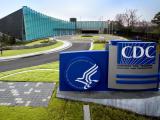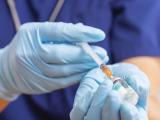Oct 18, 2004 (CIDRAP News) – In response to an apparent increase in illnesses due to contaminated produce, the Food and Drug Administration (FDA) today released an "action plan" for reducing microbial contamination of fresh fruits and vegetables.
"We've seen an increase in illnesses associated with fresh produce. We don't want to discourage consumption of produce, but we want to make sure it's safe," said Robert Brackett, PhD, director of the FDA's Center for Food Safety and Applied Nutrition (CFSAN), in a briefing about the plan today.
The FDA document cites a federal estimate that at least 12% of foodborne illness cases in outbreaks in the 1990s were linked to fresh produce. Brackett said people are eating more fresh produce in response to advice from health experts battling the obesity epidemic. Increased demand has spurred more produce imports and higher domestic produce production, he added.
The six-page action plan says little about new regulations, focusing mainly on FDA plans for providing more information and guidance to fruit and vegetable producers, processors, transporters, retailers, and consumers.
In 1997 the FDA launched an initiative to promote good agricultural practices for produce and imported food, Brackett told reporters in discussing the background of the new plan. "We wanted to expand this to include processors, transporters, retailers, and also food service, which is a very important group for food safety, and also inform consumers," he said.
Brackett said the agency in 1998 issued guidance on "Good Agricultural Practices" and "Good Manufacturing Practices" for produce. "What we've recognized in the past year is that a lot of the stakeholders were not aware of it, or perhaps weren't really embracing it as well as they could," he said.
The new plan lists four broad objectives: (1) Prevent contamination of fresh produce with pathogens, (2) minimize the public health impact when contamination of fresh produce occurs, (3) improve communication with producers, preparers, and consumers about fresh produce, and (4) facilitate and support research relevant to fresh produce.
The document lists a number of specific steps in pursuit of each objective. For example, to prevent contamination, the FDA plans to develop additional guidance on safely producing, processing, and preparing specific kinds of produce; propose rules for minimizing foodborne illness associated with eating sprouted seeds; and launch programs to educate consumers about safe handling of produce.
Listed steps for minimizing the public health impact of contamination include, among others, enhancing the capacity of PulseNet, an electronic network for sharing molecular fingerprinting (pulsed-field gel electrophoresis) data about foodborne pathogens.
In the research area, the listed steps include studies of the relative risks associated with hazards that can occur during produce production and handling, such as environmental contamination during production, unsafe handling practices, unsanitary equipment, worker health and hygiene problems, and practices that hinder tracing of contamination.
The plan deals only with fresh fruits and vegetables, including those that have had "minimal processing," such as peeling or chopping. It does not apply to frozen produce, fruit and vegetable juices, or tree nuts.
See also:



















